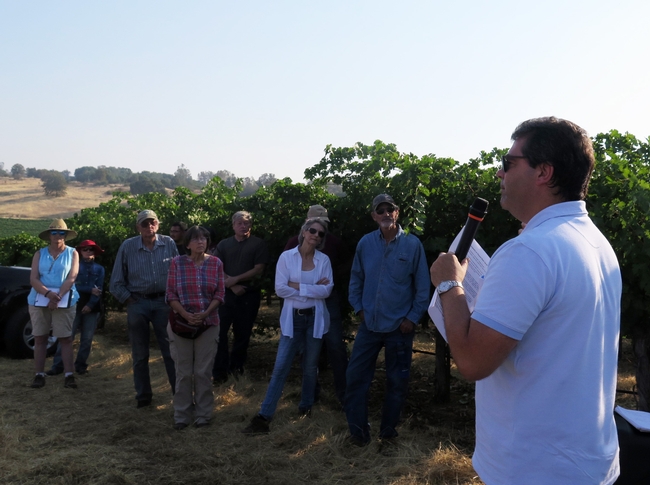
Tools for scheduling irrigation fall into three categories: we can monitor the weather, the soil or the plant. Monitoring weather includes the classic estimation of crop evapotranspiration (ET) using reference ET data (ET0), based on the amount of water an area of well-watered grass uses, and multiplying that number by a suitable crop coefficient (Kc) to determine how much water a crop has used during any given time period. The idea being, if you can estimate what a crop has used, you will know how much water to replace with irrigation. The reference ET0 depends on temperature and other local weather factors and is available online (for free, you only need to create a login) from
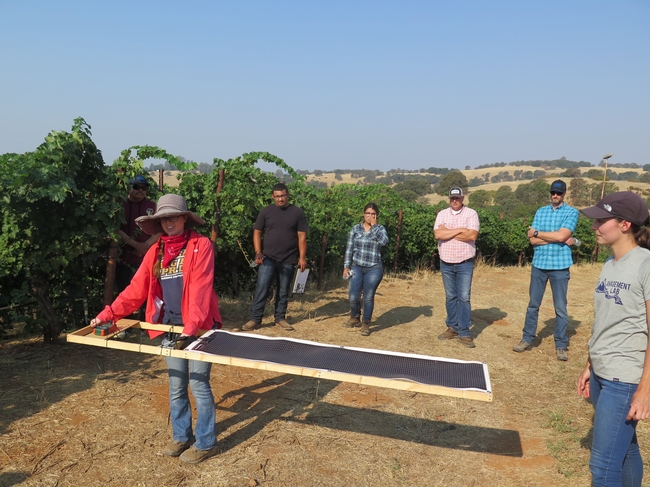
If we were growing corn or apples or almonds or practically anything else it would end there; you would have the ET0 from CIMIS and a crop coefficient given based on research and you would multiply the two and then, voila!, you would have an estimate of how much water your crop has used. But alas, winegrape production is more complicated. This is because winegrapes, as most of you know, are not irrigated to "full ET". We typically impose an irrigation deficit to winegrapes at key times of the year to increase the quality of the crop and intensify flavors in the berry skins. So, for winegrapes, we multiply the reference ET0 by a crop coefficient and then by yet another factor for "stress". The stress factor is one that a grower determines (say, 70%).
The final equation is: ETgrapes-stress=ET0 * Kc-grapes* Kstress
Furthermore, the crop coefficient is not one number, but a number multiplied by the amount of shading present. This grape coefficient was developed based on research conducted in the Valley (where it is FLAT) by our very own UC Irrigation Specialist Larry Williams and Jim Ayars, in which they found a good correlation between the percent shading and the crop coefficient. The formula they published in 2005 is Kc grapes= 0.017 * % shaded area.
But how do we get shaded area? And does this formula really work on sloped vineyards? While many growers may eyeball 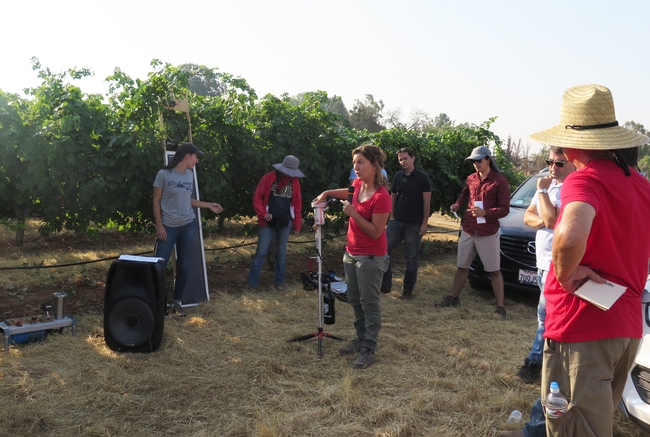
There are several ways we can monitor the plant to determine vine water needs. One of the most tried and true is to measure stem or leaf water potential using a pressure chamber. Guilia Marino, a plant physiologist who hails from Sicily, demonstrated using a pressure chamber to measure vine stress. To use a pressure chamber, a leaf is bagged (when measuring STEM water potential), allowed to equilibrate for at least 10 minutes, then the petiole is cut and the cut bagged leaf is placed in a chamber. The chamber is sealed, pressure is applied, and a hand lens is used to note the pressure at which water is pressed out of the cut petiole. Guilia likened using the pressure chamber to taking the blood pressure of the vine. If the vine is under alot of stress, it will take more pressure (higher negative reading) to force water out of the xylem of the cut petiole. I've done some work using the pressure chamber and I think it is an excellent tool for growers to use in the foothills, because it avoids the variability we frequently see in soils and focuses on what the plant is actually receiving.
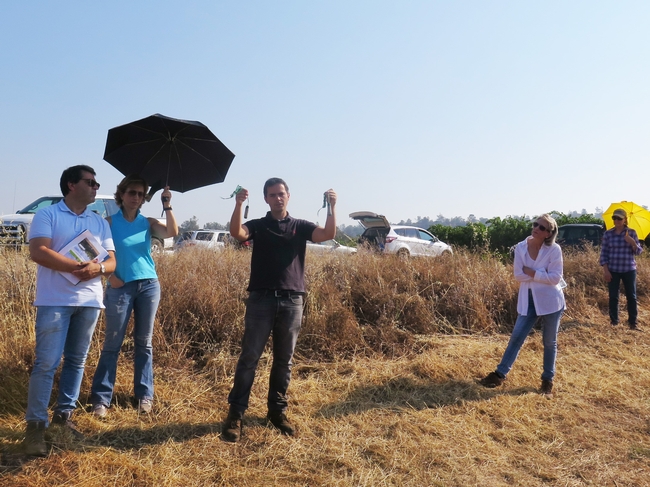
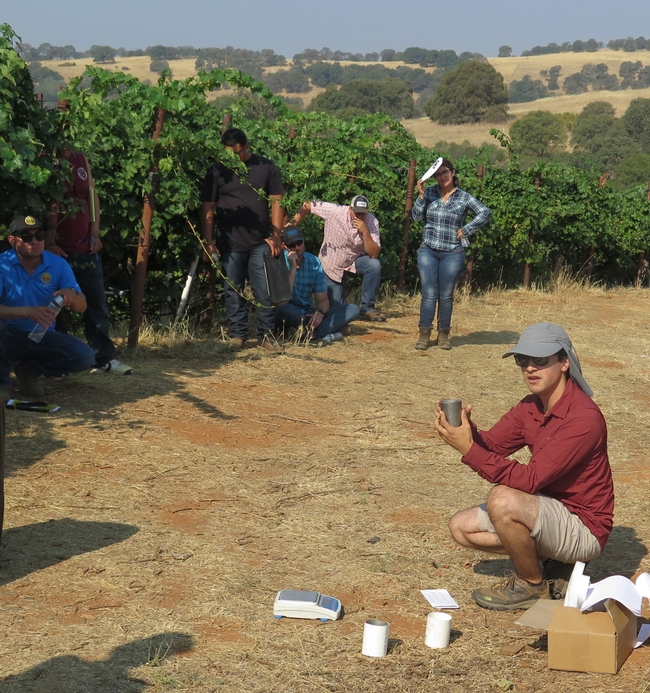
The Zaccaria Team ended our field day by discussing how critically important it is for growers to begin using a tool, if they are not already, to better understand water use in their own vineyards. Not only for improving winegrape quality, but as competition for water resources increases, the cost of water will surely continue to rise (consider the cost of running a pump) and with it the increase in regulations that require growers to demonstrate their good stewardship of water. Our growing future depends on it.